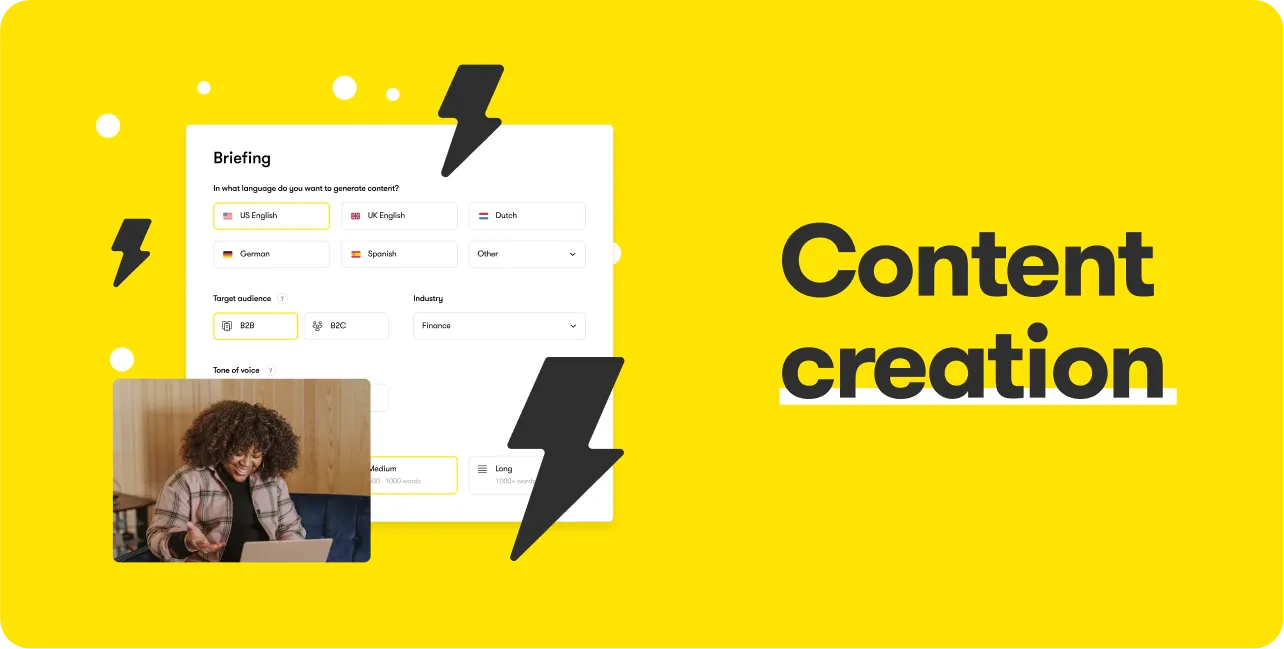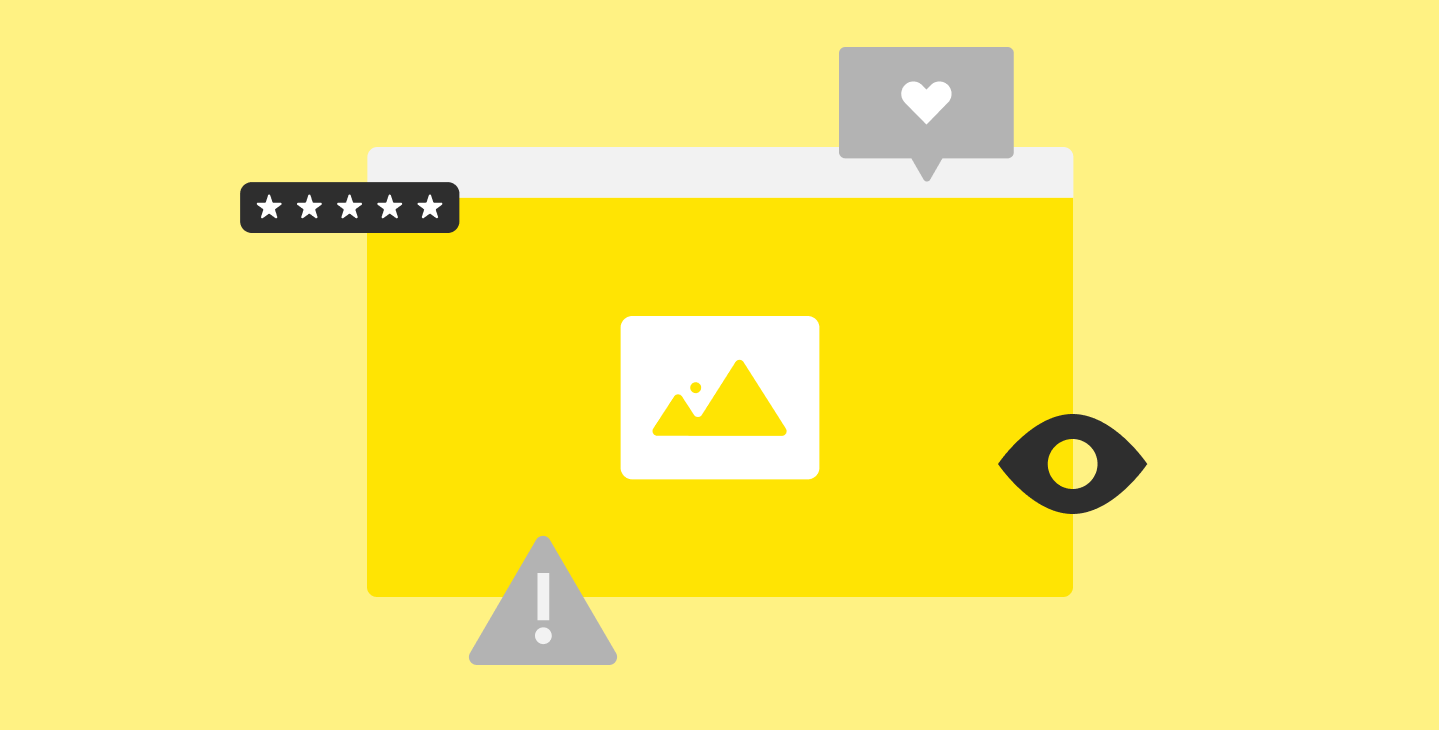In short
Struggling to capture your audience’s attention online? Want to explore new ways to grow your business, but can’t find the right tactics? You’re not alone. Naturally, as a content marketing agency, we are huge fans of the written word for optimising audience engagement. But visual content is also an important draw when trying to get in front of your ideal customers.
Visual content is a powerful tool for connecting with customers and driving business growth when created and presented well. This article explores the ways through which visual content can help your business grow, offering tips on creating the compelling visuals you need to get your brand the attention it deserves. We’ll also look at the benefits, types of visuals and best practices of visual content marketing necessary to get you on the right track.
So, grab your beverage of choice and let’s delve into the power of visual content for business growth.
Why visual content matters
Visual content plays a crucial role in business growth as it creates a direct connection to your audience, capturing potential customers’ attention, evoking emotions and conveying messages more effectively than written content on its own.
The human brain processes images faster than text, making visual content the ideal medium for quick communication. In a crowded marketplace where social media platforms dominate, visual content is essential for grabbing attention and making a lasting impression. Plus, it also makes your content more shareable.

The benefits of visual content marketing
Visual content marketing offers a variety of benefits for both B2B and B2C businesses. Here are some of the top pros, including examples of what they look like in practice.
Simplifies complex information
Visual content simplifies complex information, making it accessible by presenting data or concepts in a visually appealing and easy-to-understand format. This enables the audience to grasp information more quickly.
Two types of visual content for simplifying complex information include:
- Infographics: Infographics break down complex data or information into visually engaging elements, making it more memorable and easier to digest.
- Videos: Video demos or explainers bring ideas and processes to life, enhancing understanding and increasing engagement. Animations can be used alongside live-action footage to further optimise the user experience.

Enhances engagement and conversion rates
Engaging your audience and driving conversions are crucial goals for businesses. Visual content can significantly contribute to achieving these objectives. Here are two types of visual content to consider:
- Infographics: Infographics make that all-important instant connection, hooking your viewer with valuable information in a digestible format. This increases user engagement, which in turn leads to higher conversion rates and potentially more shares on social media.
- Videos: Videos are highly engaging and can hold your audience’s attention longer. They are the ideal format to convey information, showcase products and demonstrate their benefits, which should result in increased conversions.

Builds emotional connections and brand awareness
Establishing an emotional connection is essential for building brand awareness, recognition and loyalty. Here are two types of visual content that can help you achieve these goals:
- Emotional storytelling: Visual content, such as videos or images, combined with narrative elements, evoke emotions and help you connect with your audience on a deeper level. This emotional connection means you stick in your audience’s minds, building brand awareness and fostering loyalty.
- Memes: Humorous or relatable visual content, such as memes, create a positive brand association, making your business more recognisable and increasing brand awareness and recall.
Gives you differentiation in a crowded market
In a world where every brand is vying for customers’ attention, it’s crucial to stand out and differentiate yourself from competitors. Here are two types of visual content that help businesses stand out:
- Unique visual identity: Using visual elements like colours, fonts and design styles consistently across your marketing materials helps establish a unique visual identity. This differentiates your brand and makes it easily recognisable.
- Illustrations: Unique and creative images give a brand a distinctive personality. They bring the content to life and leave a lasting impression, thereby setting it apart from competitors.
Boosts reach and engagement on social media
Social media platforms provide powerful opportunities to reach a wider audience and drive engagement. With beautifully crafted visual content, you can significantly boost your results.
Here are two types of visual content to add to your social toolkit:
- Shareable visuals: Aesthetically pleasing, informative, or entertaining visual content such as short videos or user-generated content has a higher likelihood of being shared on social media. This expands the reach of the content and increases overall engagement. It can also help improve search engine rankings.
- GIFs: Eye-catching, topical or entertaining GIFs quickly grab attention on social media. They encourage users to interact with the content, amplifying its reach and driving engagement.

How to create compelling visual content
Creating effective visual content goes way beyond aesthetics. There are several key principles to consider to ensure your content resonates with your audience. Here are some simple tips for using visual content effectively across your marketing channels.
- Ensure consistency in design elements: Maintain consistency in your visual content by using a unified set of design elements, such as colours and fonts as well as the overall style. This doesn’t mean you shouldn’t use a variety of media, just that the visual tone should be recognisably and authentically your brand.
- Diversify your content types: As we just mentioned, it’s a great idea to experiment with different types of visual content to cater to different audience preferences. Consider using infographics, videos, animations, illustrations and interactive elements like quizzes and graphs to keep your content fresh and bring it to life.
- Focus on high-quality visuals: Clear, well-designed visuals not only make a better impression on your audience but also convey professionalism and credibility.
- Tell your brand story: Use your visual content to tell compelling, original stories and evoke emotions. Emotionally resonant visuals have a stronger impact on your audience, helping you build brand awareness and loyalty.
- Optimise for different platforms: Adapt your visual content to suit the characteristics and requirements of different marketing platforms. This ensures that your content appears at its best and has the maximum impact on each platform.
Measuring the effectiveness of visual content
Measuring the effectiveness of visual content with tools like Google Analytics, as well as platform-specific analytics, is essential for understanding its impact on your marketing activities. Tracking engagement, conversion rates, reach and brand awareness provides valuable insights into content performance and means you can identify opportunities and areas to improve on.

We hope this article has given you some inspiration on how you can optimise your visual content to grow your business. If you are interested in the capabilities of AI tools to help create visual content, you can read our blog about AI Image generators.
If you’d like to find out more about how Contentoo’s team of expert freelancers can help you reach a wider audience and get a competitive edge, contact us today.




